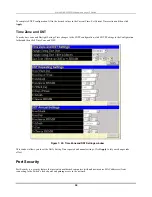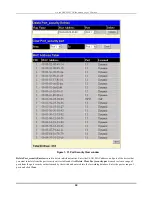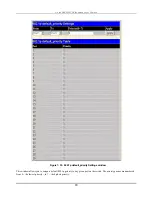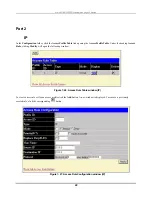
D-Link DES-3250TG Standalone Layer 2 Switch
existing entry.
State <
Disabled
>
This field can be toggled between
Enabled
and
Disabled
. This is used to
turn a link aggregation group on or off.
This is useful for diagnostics, to quickly
isolate a bandwidth intensive network
device, or to have an absolute backup
link aggregation group that is not under
automatic control.
Master Port <
Port 1
>
The Master port of link aggregation
group.
Member Port
Allows the specification of the ports that
will make up the link aggregation group.
Type <
Static
>
Select
Static
or
LACP
(Link Aggregation
Control Protocol).
Active Port
Shows the port that is currently
forwarding packets.
Flooding Port
A trunking group must designate one
port to allow transmission of broadcasts
and unknown unicasts.
After setting the previous parameters, click
Apply
to allow your changes to be implemented. Successfully created trunk groups
will be show in the
Current Link Aggregation Group Entries
.
LACP Port
The DES-3250TG supports Link Aggregation Control Protocol. LACP allows you to bundle several physical ports together to
form one logical port. After the LACP negotiation, these candidates for trunking ports can be trunked as a logical port. If any
one of the connected port pairs does not have LACP capability, these two ports will stand as regular ports until the LACP
negotiation is successfully completed. Like the traditional port trunking explained earlier in this manual, the member ports of
an LACP trunk group can only be from a trunk with a peer LACP trunk group.
79
















































